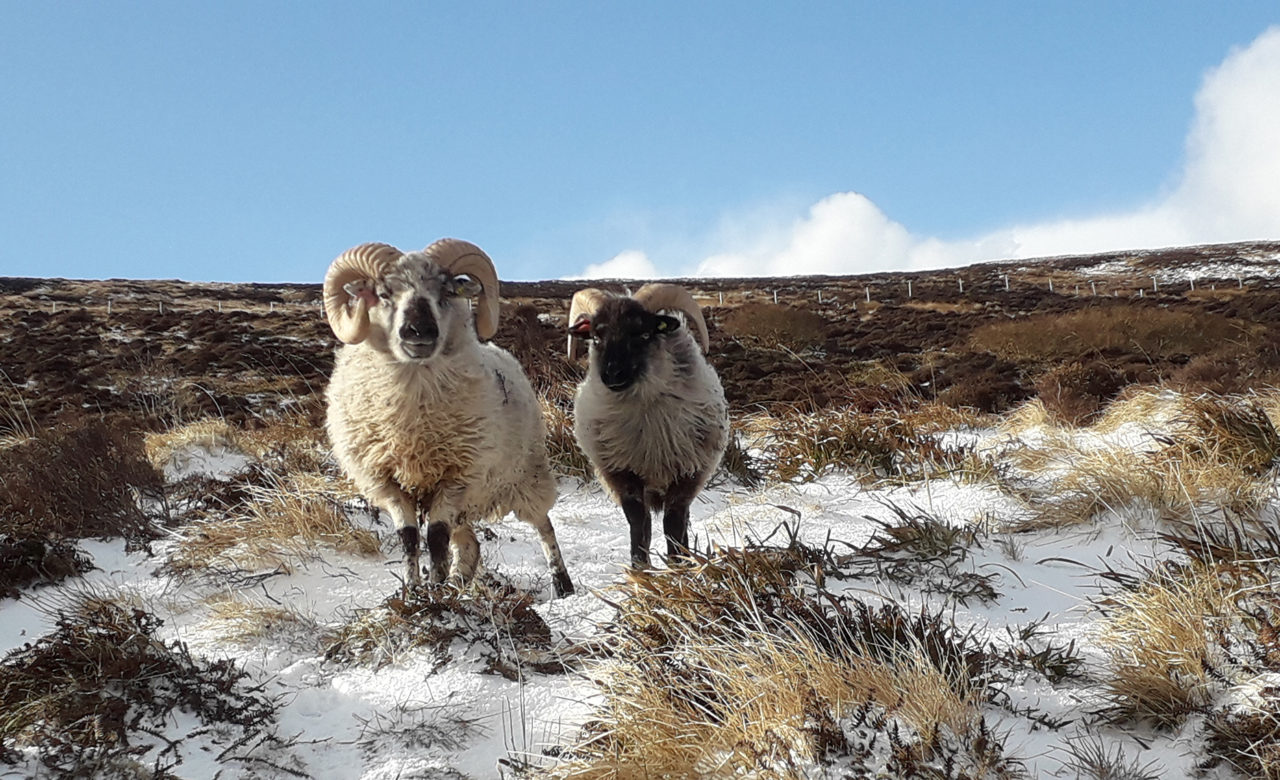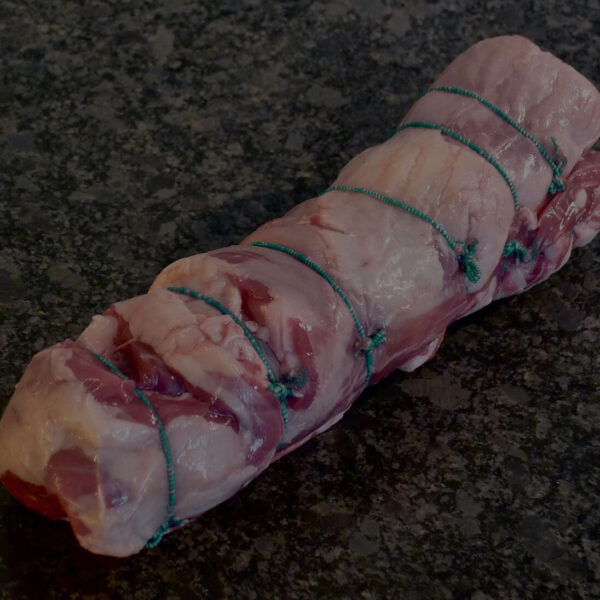THE BREED
THE LOST FLOCK
The Vikings, St Kilda and Beyond
Orkney Boreray sheep originate from Boreray sheep, which descend from a North Atlantic short-tailed sheep — originally brought to Europe by neolithic farmers thousands of years ago. Later, these sheep were considered important to the Vikings due to their ‘double-coated’ fleece — durable and highly waterproof wool, used to create sails for longships and clothing that could withstand the elements.
Before the Clearances of the late 18th/early 19th century, descendent Scottish Dunface (or Old Scottish Shortwool) sheep were essential in the Highlands of Scotland for clothing, meat and dairy. These Scottish Dunface arrived on the remote Hebridean islands of St Kilda, and a flock were left alone on Boreray Island. Then, in the 19th century, Hebridean Blackface rams were introduced to St Kilda — and Boreray sheep are thought to be the direct descendents of the extinct Scottish Dunface sheep, with the likely infusion of Hebridean Blackface.
In August 1930, during the evacuation of St Kilda’s residents, the sheep on Boreray Island were left behind — living in solitude for over 40 years, until in the 1970s a small number of Boreray sheep were taken off the island. Breeding flocks were established, and the Boreray breed was registered with the Rare Breeds Survival Trust (RBST).
One flock, however, was not registered — and, with the introduction of other St Kilda sheep from Boreray Island, this ‘Lost Flock’ became genetically distinct from the rest. In 2013, the descendents of this flock were brought to Orkney, and in 2017 they were placed by the RBST on a separate register from all other Boreray sheep.
In doing so, the Orkney Boreray Flock was formally established.
ORKNEY BORERAY HISTORY
4000 - 3000 BC
EARLY ANCESTORS
Early ancestors of Orkney Boreray sheep (a North Atlantic short-tailed breed) brought into Europe by neolithic farmers.
800 - 1000 AD
THE VIKINGS
Vikings use the wool extensively — the double-coated, naturally water resistant, fleece made for excellent clothing and longship sail material.
Mid-Late 18th Century
SCOTTISH DUNFACE
Prior to the Highland Clearances, farmers in the region relied on Scottish Dunface sheep (now extinct) for clothing and food. These sheep were driven out of the Highlands throughout the late 18th Century and early 19th Century, and by mid-19th Century they survived only on remote islands such as St Kilda.
Early 19th Century
HEBRIDEAN BLACKFACE
Hebridean Blackface rams introduced to St Kilda. Boreray sheep descended from Scottish Dunface sheep, likely with an infusion of Hebridean Blackface. Crofters on St Kilda rear these Boreray sheep on the archipelago.
1930
ST KILDA EVACUATED
St Kilda residents evacuated from the main island, Hirta, and livestock on Boreray Island is left behind. The sheep continue to graze on the rough pasture along sheer coastal cliffs and challenging island terrain.
1970s
THE LOST FLOCK
A number of Boreray sheep taken from Boreray Island — breeding flocks established, registered with RBST. One Highland flock not registered due to remoteness. This became known as ‘The Lost Flock’, joined by a few other St Kilda sheep.
2013
ORKNEY BORERAY
Most descendents of this ‘Lost Flock’ brought to the Orkney Isles. Breeding programme established to increase their numbers. Orkney Boreray sub-group started.
2017
BREEDING AND EXPANSION
RBST formally recognise Orkney Boreray sheep are a 'completely separate line to other mainland sheep’, possibly with unique DNA compared to other Boreray sheep in mainland UK’. Small breeding group from main (Settisgarth) flock moved to Lochend Farm on Shapinsay as part of breeding and expansion.
2021
HOY AND STRONSAY
Sheep from Settisgarth forming new flocks on Hoy and Stronsay.
Discover Orkney Boreray
DID YOU KNOW?
• A Rare Breed
Orkney Boreray remain especially rare and were previously classified as a critically endangered breed. Through breeding and expansion efforts, however, numbers are steadily rising. At present, there are around 50 breeding Orkney Boreray ewes on Orkney, with over 500 Boreray ewes in the rest of the UK.
• Full of Character
Anyone who observes Orkney Boreray sheep will quickly discover they’re small, endearingly feisty sheep, full of personality and energy.
• Slow to Grow
As a primitive breed, Boreray sheep take around 2-3 years to reach maturity, and this is evident in the maturing process of Orkney Boreray sheep too. While their rate of growth is slow, this adds a depth of flavour to Orkney Boreray mutton.
• Double-Coated Fleece
Orkney Boreray sheep have a double coated fleece with a fine coat underneath their outer layer, and they naturally ‘roo’ (shed) their fleece in springtime. This is a quality that has been advantageous to many societies over the years, including the Vikings.





